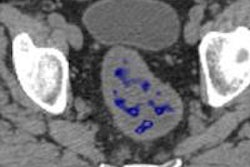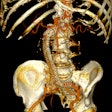Dear AuntMinnieEurope Member,
We're pleased to open this week's newsletter with a new article in our PACS Community about an ambitious scheme to implement a countrywide RIS/PACS network in the Republic of Ireland.
Researchers from the National Integrated Medical Imaging System presented an overview of their experiences at the recent RSNA 2014 meeting, describing the lessons they learned in setting up the project. You might find some of them eye-opening -- click here to read more.
In the world of CT, German researchers found that performing spectral imaging on a dual-source CT scanner had advantages over several other methods of spectral imaging, such as with single-source scanners. They found that the dual-source technique offered the best combination of image quality and radiation dose. Learn more by clicking here for the article in our CT Community.
Another German group used a wavelet image processing algorithm to better visualize cerebral vessels on CT angiography studies, while a group from the Netherlands discovered that computer-aided detection (CAD) software can pick up large pulmonary nodules on CT scans -- currently a blind spot for many CAD programs.
In radiography, Spanish researchers explore the diagnostic algorithm for calcified lesions found on abdominal x-rays. Should CT be ordered in these cases? Learn their recommendation in this article in our Digital X-Ray Community.
And while you're in the community, be sure to read this story on how a team from Hong Kong measured the amount of time saved by using a portable x-ray system equipped with wireless digital radiography compared with a unit outfitted with computed radiography. You might be surprised by their results.
Finally, visit our PACS Community to find out how Greek researchers used an iPad to diagnose spine fractures on radiographs just as effectively as if they had been using a regular PACS workstation.















